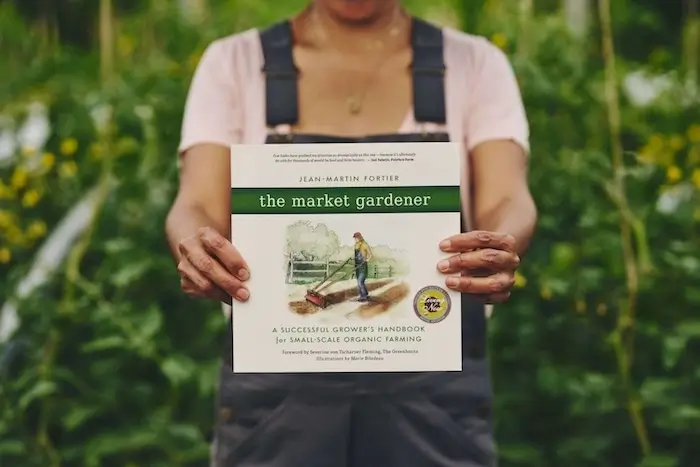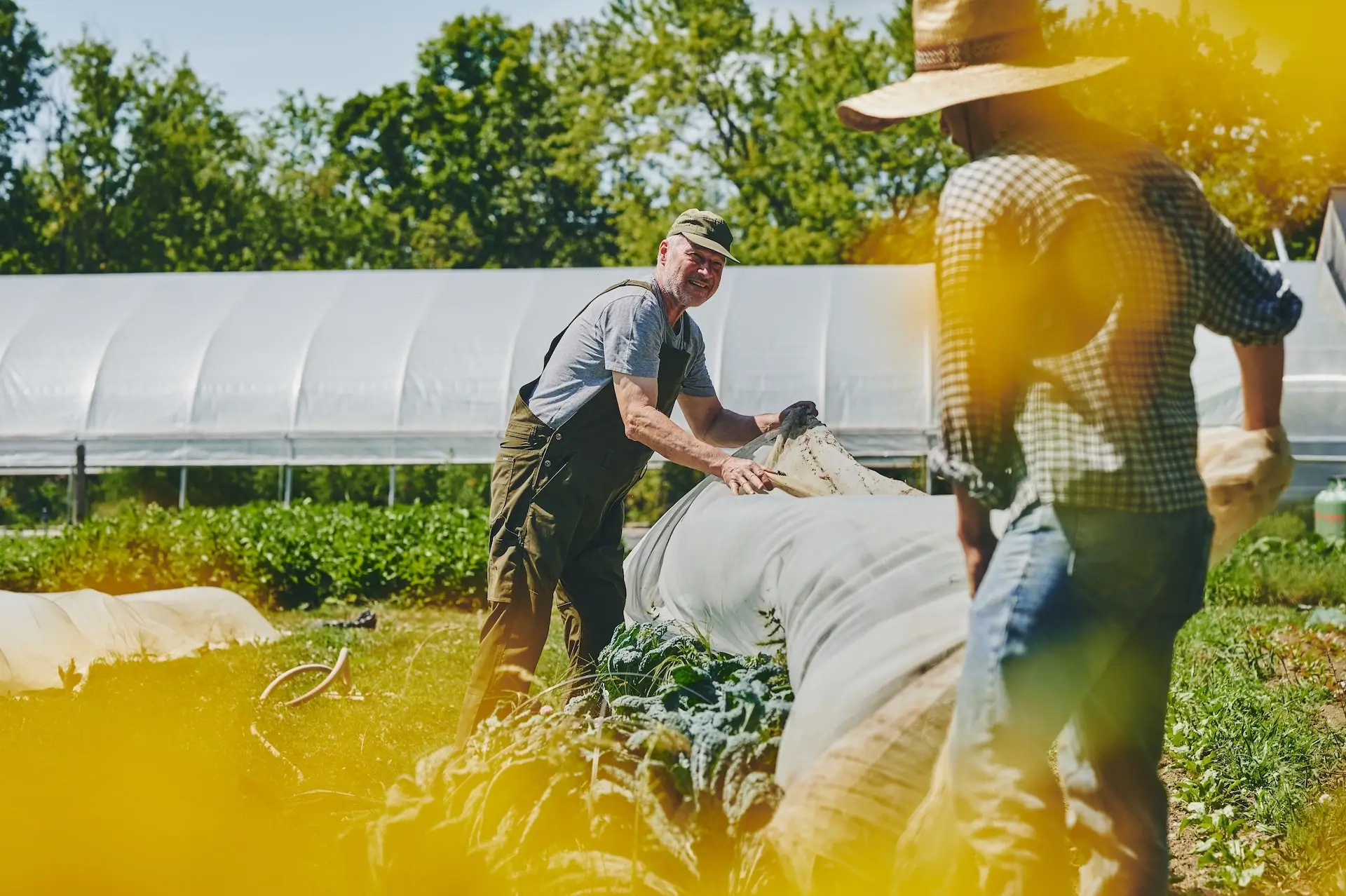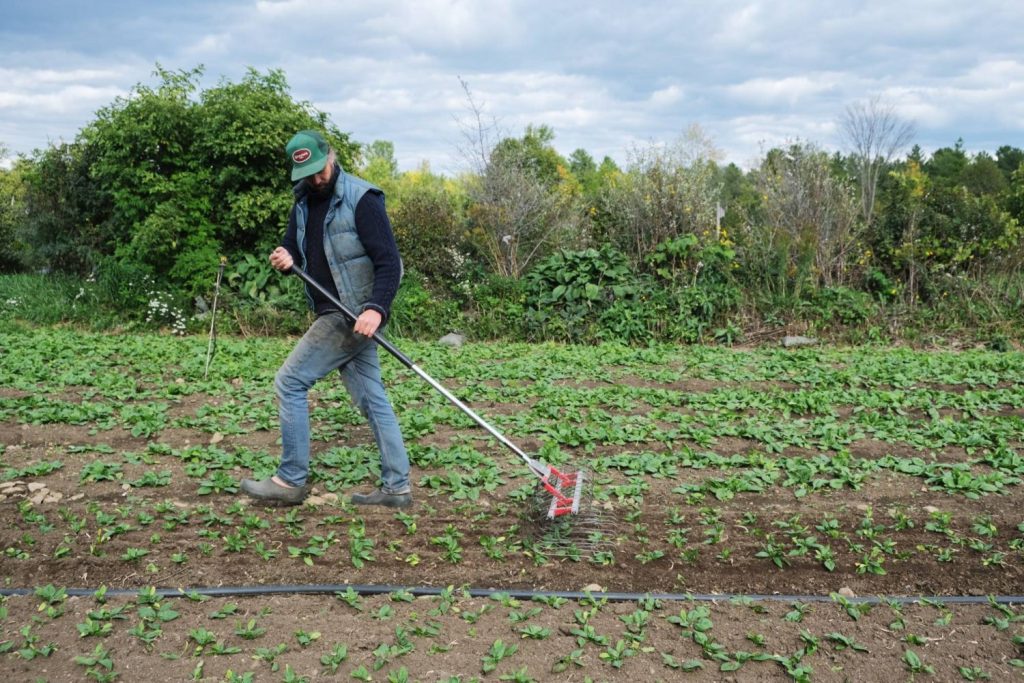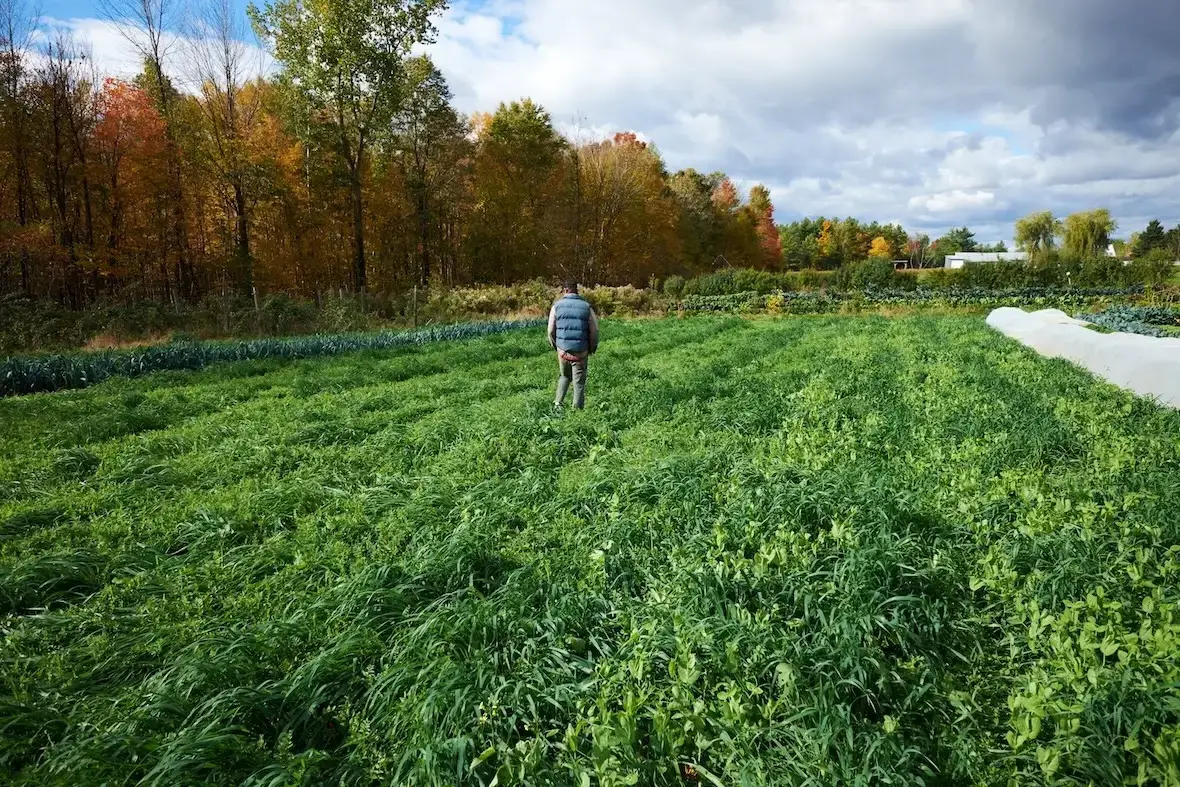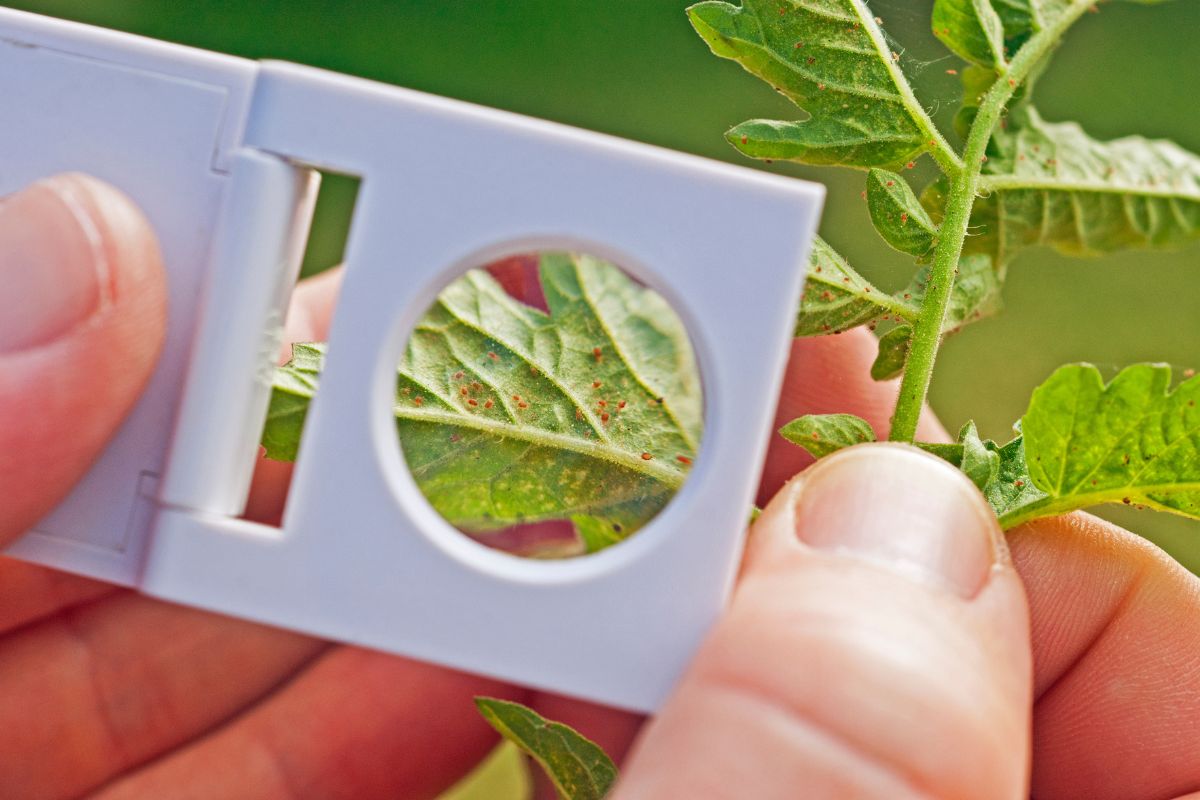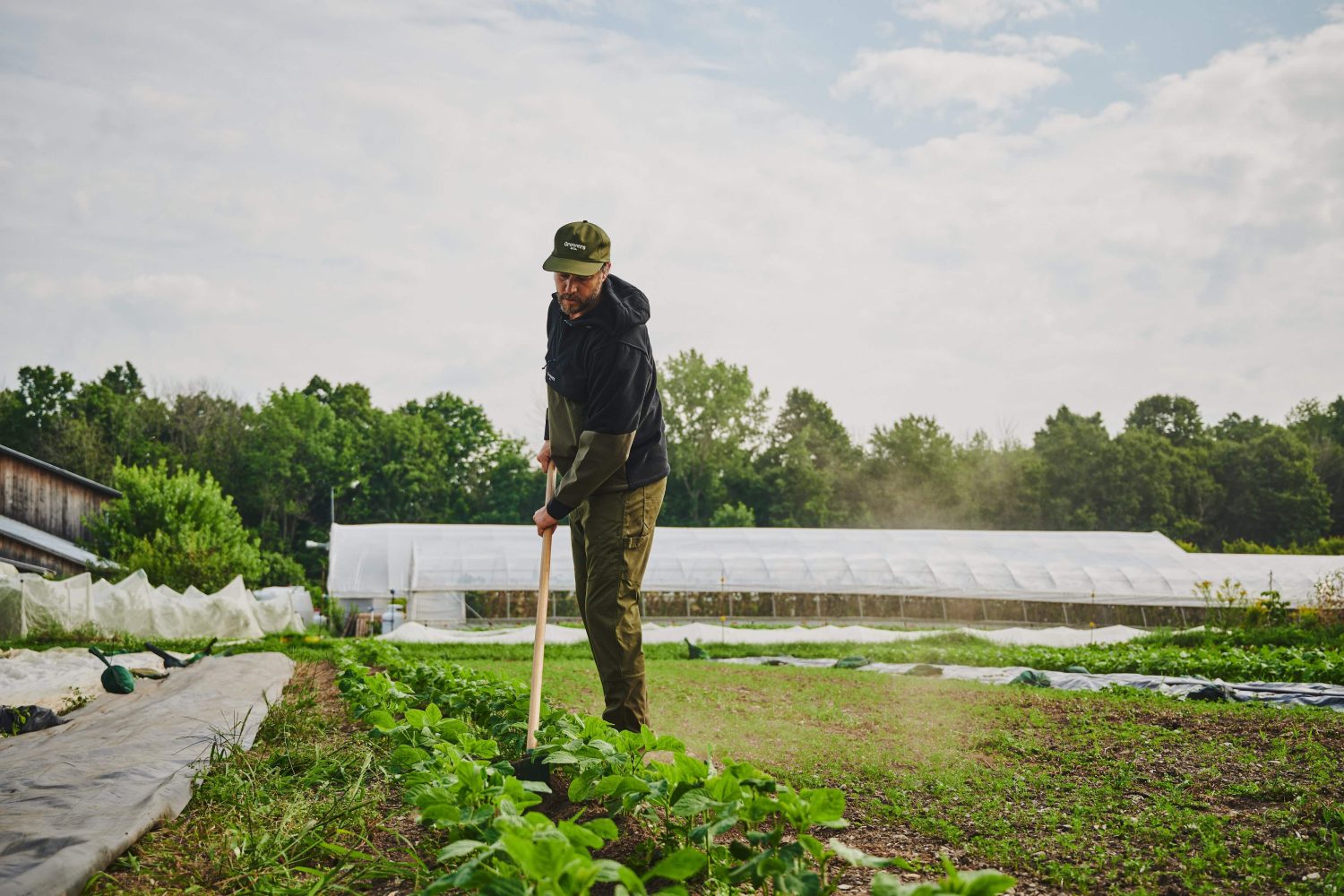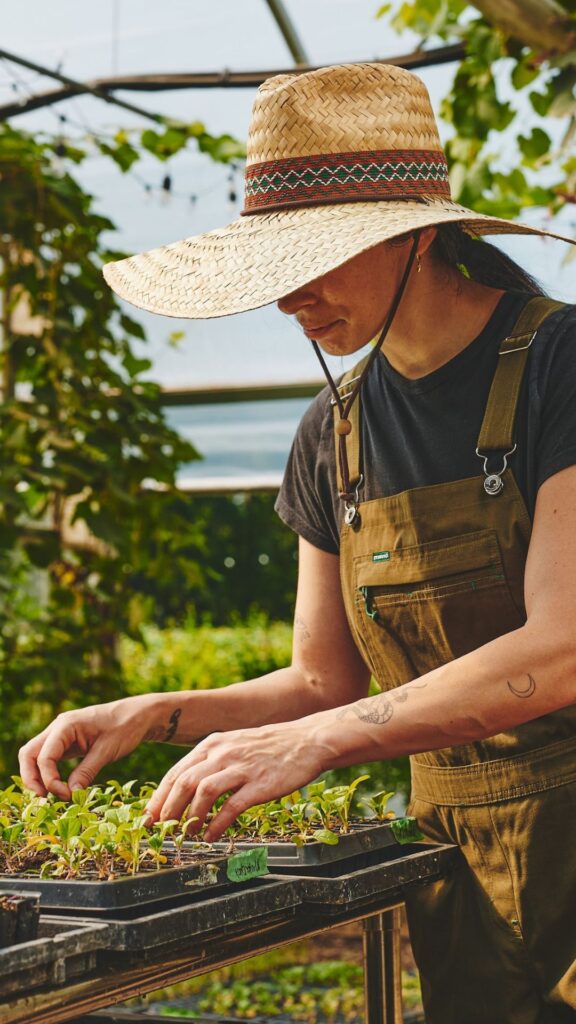The flex tine weeder is a relatively new tool in our market garden tool shed and is ultimately a game-changer, especially when it comes to growing high-density greens. It is a simple tool to use that saves us an incredible amount of time and after using it for a few years, we would never revert to growing greens without it.
Here are some great tips on how to maximize the use of your flex tine weeder.
What Is a Flex Tine Weeder?
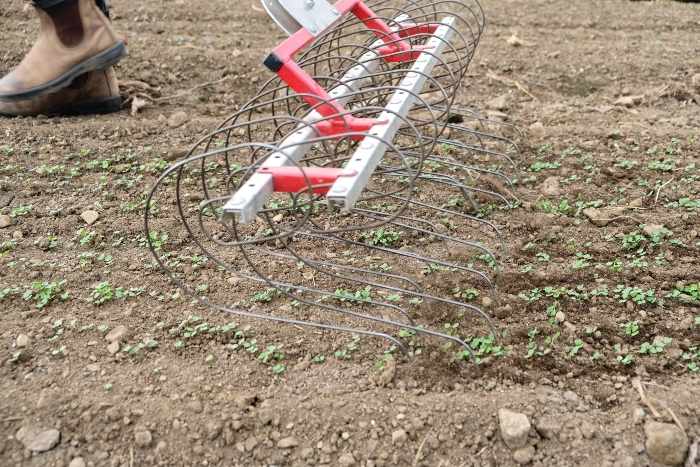
A flex tine weeder is a special type of rake used to weed crops. It is composed of two rows of curved and flexible tines mounted on a handle. We use the flex tine weeder that has a 30 in (75 cm) width so it fits perfectly on our beds, but note that other widths are also available. Its design cleverly applies conventional farming techniques to a small-scale market gardening tool.
Our preferred Flex tine weeder model is manufactured by a Vermont Company called Two Bad Cats. It is a high-quality product that lasts and has the advantage of being very light with its aluminium handle.
Why Use a Flex Tine Weeder on your Farm?
The use of the flex tine weeder on a market garden is nothing short of revolutionary. It allows the market gardener to grow greens, such as arugula and baby greens, without having to do any hand-weeding. The secret of this ingenious tool is to kill the weeds when they are not established in order to allow the primary crop to grow without interference.
It also has the advantage of breaking the soil crust which increases the mineralization of the soil’s organic matter. This means that one pass with this tool has two purposes: weeding and increasing the nutrient availability in the soil.
How to Use a Flex Tine Weeder to Avoid Hand-weeding
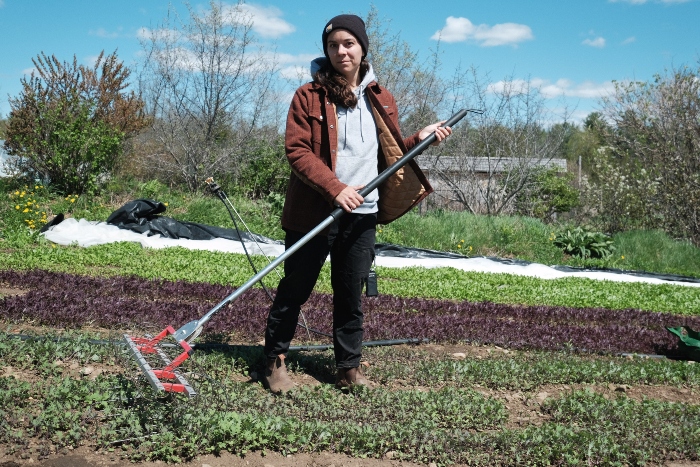
Plan to use the flex tine weeder when your crop is well-established (i.e. when the roots have started to spread out) and the weeds are still small. Using this tool will not uproot your crop and will instead focus on addressing the weed presence.
Start using the flex tine weeder by aligning the tool on your crop with the tines facing the ground and then walk on the pathway. The principle of this weeding technique is a “blind” weeding session: meaning you just need to keep the tool centered on the bed and walk forward, dragging the tool along the soil.
These are general recommendations, but the best trick in managing weeds is observation. These techniques have to be constantly adapted to the reality of what’s in the fields.
Overall, there is no downside to using this tool. It is a real-time-saver and has become an essential part of any greens production. The initial investment is quickly recovered from its ability to eliminate manual weeding, and the life of a busy harvester is greatly simplified by its assistance in producing perfect beds of greens. The promise of this tool is no more weeds in your salad mix!

